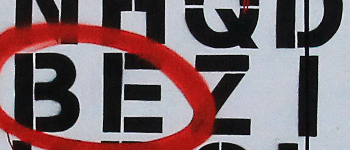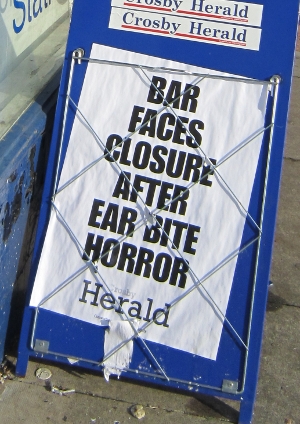I attended a workshop last night. Every two weeks this group gets together to analyse two or three chapters submitted by members of the group. As usual the work was bulging with ideas. And as usual I was sent back to my books to research some of the examples of craft the work revealed.
One chapter developed a theme with such subtlety that I barely noticed it at first. It reminded me that I should examine my own work and look to build in such resonance.
Ideas cannot be copyrighted. This is a thoroughly good thing for writers since otherwise we’d have run out of plots, character archetypes and tension devices years ago. Still, I don’t feel comfortable laying out another writer’s plot before her novel is complete. So I’m going to invent a scenario that has parallels, but which differs in the particulars.
You’ll have to trust me that the original was more compelling.
My mirror-world chapter follows an investigator who must interview the colleague of a possible suicide victim. The investigator, let’s call him Harry, faces a defensive reaction from the subject, Sarah. He reflects that the marks of his profession—his badge and his suit, his impassive manner—all protect him from personal attack. In fact, he thinks later, the rage of a bereaved witness can be useful. People reveal more than they think in anger.
Harry knows by other means that Sarah was more than just a colleague to the dead man, but she does not admit to the affair during the interview. She is wary that this information might find its way into a report, so she uses coded and ambiguous language. “We were friends,” she says, and looks away. Blinks. Harry, caught in a doomed relationship himself, understands her use of that word: friends. It is heavily and ironically overloaded, a key that unlocks both her meaning, and our understanding of Harry’s situation.
Later, when he’s pondering some confusing aspects of the case, he calls to mind an earlier investigation. He remembered an arsonist who burned down his tenement building, killing a family of poor tenants who had stubbornly refused to quit their rent-controlled apartment. The perpetrator escaped prosecution on a technicality, and then built a new life, seemingly without remorse. Harry is haunted by this tension. The murderer and the family man co-existing so easily. The man’s bland hazel eyes. Harry has never reconciled that contradiction. In a way, he thinks, that’s the purpose of his work now.
Eventually Harry visits Sarah again. He offers up his own secret. He reveals his affair. In the act of confessing this he makes a connection. He has a friend too, he says, as if handing the key back to her. We end the chapter as the woman is about to begin her tale.
These are moments in a rich chapter which offered plenty of procedural detail and layering of character. Nevertheless, they may combine, I think, to serve two related purposes.
Firstly, they establish a theme, which runs throughout the chapter and, I suspect, will permeate the book.
This is about the boundary between appearance and reality. And about the complex ways these realms interrelate at that border. Harry’s public persona protects his hidden self from hurt. He invites attack, in fact, in order to draw out what is hidden in others. Sarah has a secret, and she uses a code to reveal its presence and nature. The code unlocks our understanding of Harry, and reveals that he guards a secret too. Harry recalls a criminal who hides a bloody past beneath a more recent facade of family life. The arsonist sees no contradiction between his two lives. In the end Harry must trade access to his inner life in order to access that of Sarah. In other words he exploits his protected self in the service of his public mission. We don’t know this yet, but it’s safe to assume that neither Harry’s confession, nor Sarah’s tale will be entirely what they seem. Throughout the chapter we hover on the boundary between what seems and what is.
Here is Jessica Page Morrell on theme in her book Between the Lines:
Theme simmers beneath the narrative and, like other elements, often whispers. The best themes infiltrate the reader’s consciousness rather than being ladled from the story like a thick stew. They lend significance to the events in fiction and reflect larger meanings. Human weakness, fallibility, vulnerability, and imperfection are rich territories to explore in your themes. Basic instincts like fear, greed and jealousy can also be tied into themes. (P 263)
Of course an investigation is the perfect vehicle for this theme. By its nature an investigation requires that something is hidden, and its end is revelation. What is revealed, though, is not always the investigation’s stated objective. Think, for example of what Senator Joe McCarthy’s project ultimately revealed (hint: we learned nothing at all about communism).
I don’t know how many drafts the real chapter’s author had been through to get to her submission, but I suspect that theme is something that can emerge organically. As you write, you become interested in certain aspects of your characters and their lives. Thse resonates then in other scenes. If that’s the case, the trick then is to recognize the themes in your work and to tease them out. It is perhaps an ideal third draft task. Morrell again:
After you’ve completed your first draft, print it out and read it carefully with a pen in hand. If possible allow a few days or weeks for the draft to cool before approaching it with your editor’s hat on. When reading it, you can investigate your mind at work. Patterns, motifs, images moods, colors, and repetitions can be noticed. As you read your first draft, ask, yourself.
- Can I see a setting or a characters appearance in a new light?
- Do certain ideas or scenes have more zing than others?
- Is the conflict resolved in a way that is plausible and satisfying?
In your final drafts, as you discover your theme, you might want to underline it by adding moods, symbols or images. (P 280)
Perhaps one sign of an early draft is the literalness of theme. My instances of concealing and revealing resonate with one another, but they are right up there in the story. Nothing wrong with that, but there is also a lower level resonance. The world of things and sounds can hum along with your theme, deepen it.
In The Artful Edit Susan Bell calls this leitmotiv:
Leitmotiv, one of those words that people nod at, then go home to look up in the dictionary, is, according to the Oxford English Dictionary, “a recurrent idea or image in a literary work.” Leitmotiv, used well, gives a layered depth and resonance to an otherwise stark plot. Used clumsily, it is pedantic.
(P81)
So while associating your theme with images and colors is a good idea, it’s probably best to avoid being too labored about it. Our theme is a bit of a gift, since the world is constantly playing peekaboo around us. We unwrap presents, hide our peas beneath the rims of our plates. A cloud scuds away, and reveals sunshine. Things scuttle under rocks. There’s fun to be had, but one could certainly overdo it. Susan Bell again:
A theme is not a message. It is an idea written in invisible ink on the backside of your text. Choose a theme you want to emphasize. Then think of what image could represent it. Make it nonliteral—do not dumb down your theme with a cliche, such as rice for the East and corn for the West. Metaphorical symbols such as color, texture, fragrance or sound, may work better. A leitmotiv should not speak so much as resonate. (p85)
The second element I recognized in my co-attendee’s submission was a powerful hint of a conflict to come. This referencing ahead is often called foreshadowing.
Foreshadowing is a hint that points forward to an incident or scene that is yet to occur. It can be a near mirror image, or a suggestion. It can be the beginning of a gesture that must be completed, the first pebble in a rockfall. It serves to establish expectation in a reader, and so can be used to engender tension. Foreshadowing also helps to manage a reader’s readiness to believe. We establish a world in which a certain thing is possible and even likely, so that later the real dramatic foregrounded version of the tease is something the reader is ready to accept. Also, in setting up expectation in a reader, we can go the other way and deny or twist the promised outcome. The toss of the coin may finally come down tails, the underdog may ultimately win against all the odds, the gun may fail to fire. Whether we fulfill or confound expectation, foreshadowing helps us to control it.
Here’s Jessica Page Morrell:
Foreshadowing has three main functions: to build unity in a story, to create credibility for future events, and to increase tension and suspense. One of the earliest suggestions for foreshadowing came from short story master Anton Chekhov, who explained that if you plant a gun in the first act, before the story ends some one must shoot the gun. (P98)
In our example, theme could deepen into foreshadowing if Harry’s ploy to gain Sarah’s trust were to become the heart of his story later on. Perhaps just as he first traded information about his affair for a lead in his case, later he will be called upon to trade his very relationship (or the life of his lover even) for its resolution. By the time Harry is challenged to make this sacrifice we already know it’s in his nature to consider the bargain. We can’t be sure which way he’ll jump, though, once the stakes are raised.
Susan Bell gets the last word:
It is said in feng shui, the ancient Chinese art of making space accommodate the spirit, that you should hang a picture or other tantalizing object on a wall at the end of a corridor that takes a turn. This is because the person walking down it should not face a blank space, but be pulled forth by an intriguing image; this way, she will she will make it to the end and turn. So it is in writing. Editing is the opportune time to get an overview of your story’s proportions, rhythm, and tension. When you reread your draft, look for the walls still left blank at the end of turning corridors, where you may place an arrow as it were, to get your reader to make the turn. (P81)





